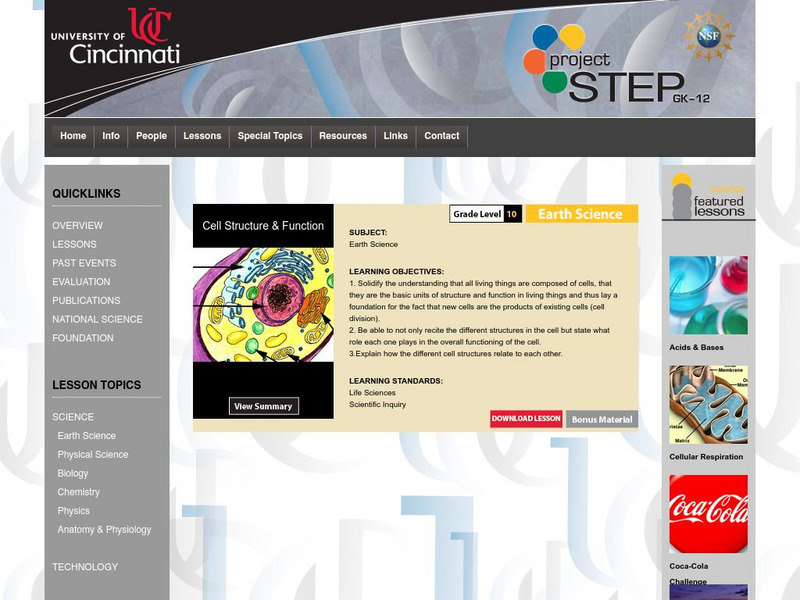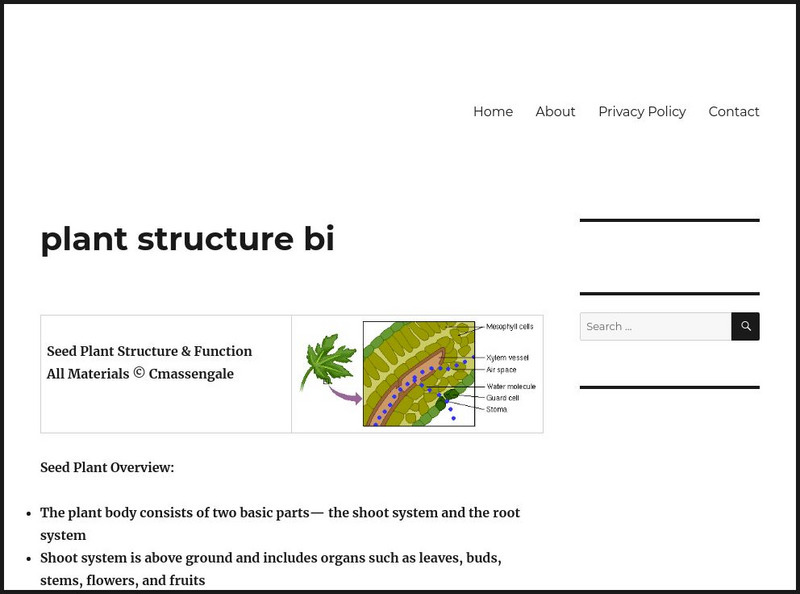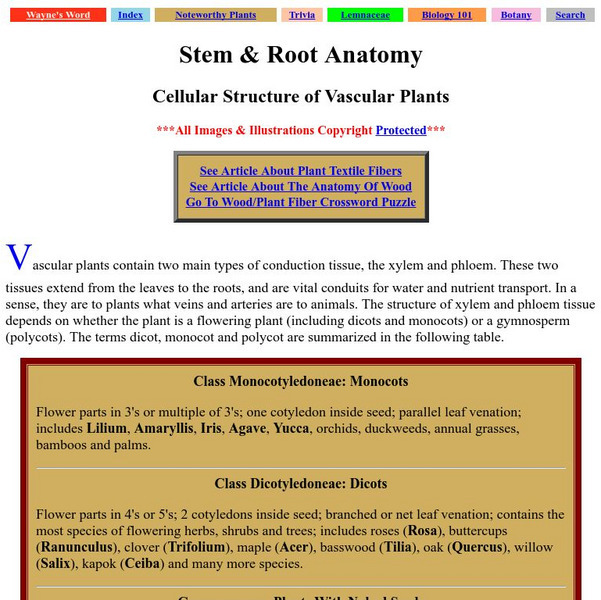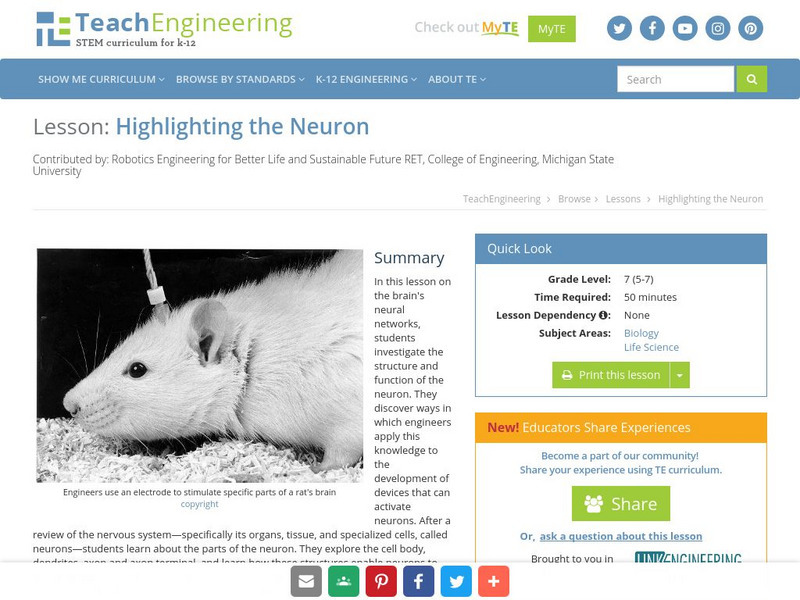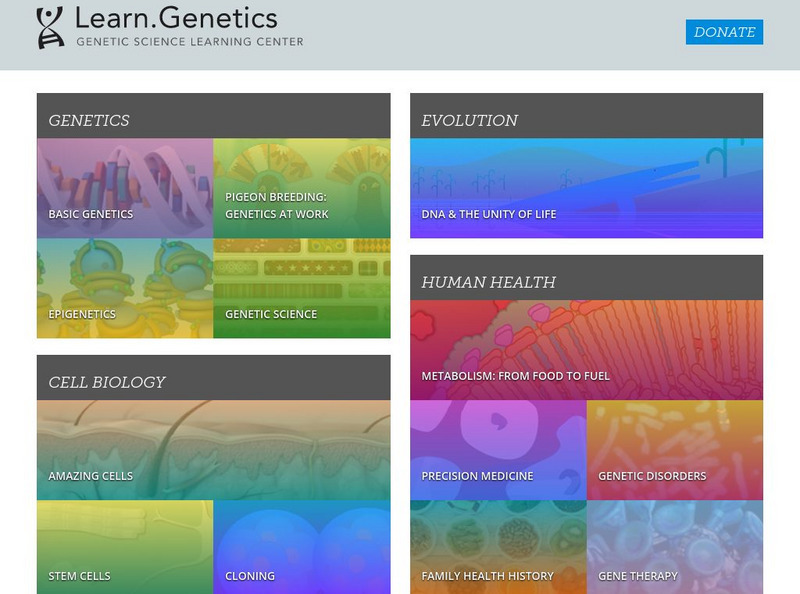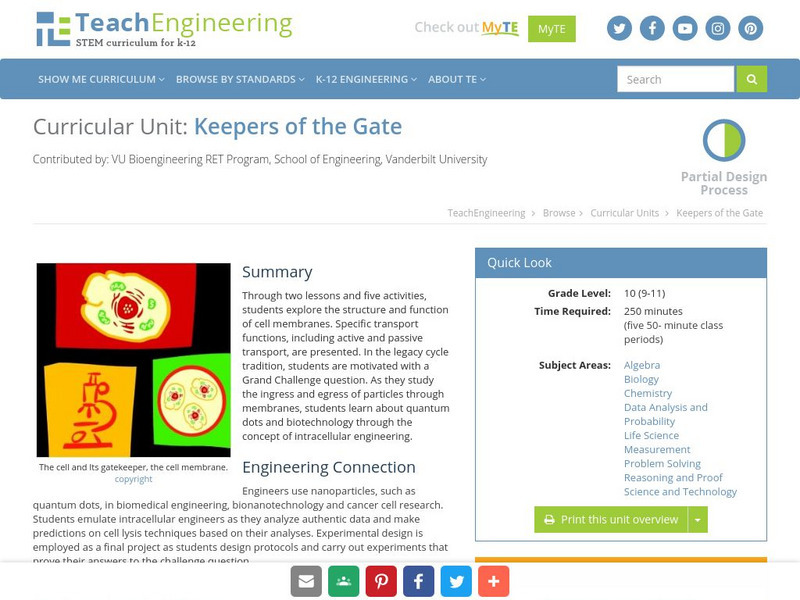Khan Academy
Khan Academy: Cell Cycle Checkpoints
Learn how cells use checkpoints to regulate the cell cycle. This article provides an overview of cell cycle control, outlining the factors that influence a cell's decision to pause or progress at each checkpoint.
Khan Academy
Khan Academy: Cell Cycle Regulators
This article looks at a few of the most important core cell cycle regulators: proteins called cyclins, enzymes called Cdks, and an enzyme complex called the APC/C.
TeachEngineering
Teach Engineering: Cells
In this unit, students look at the components of cells and their functions and discover the controversy behind stem cell research. The first lesson focuses on the difference between prokaryotic and eukaryotic cells. In the second lesson,...
Other
University of Cincinnati: Project Step: Cell Structure and Function
Engaging, interactive instructional activity focusing on cells being the basic units of structure and function of all living things. Students will be able to explain the different roles of each structure and how they relate to each other.
TeachEngineering
Teach Engineering: Cell Membrane Color Sheet and Build a Cell Membrane
Students color-code a schematic of a cell and its cell membrane structures. Then they complete the "Build-a-Membrane" activity found at http://learn.genetics.utah.edu. This reinforces their understanding of the structure and function of...
TeachEngineering
Teach Engineering: Cell Membrane Structure and Function
Students learn about the different structures that comprise cell membranes, fulfilling part of the Research and Revise stages of the legacy cycle. Students view online animations of cell membrane dynamics (links provided). Then they...
TeachEngineering
Teach Engineering: Cell Celebration!
Students look at the components of cells and their functions. The lesson focuses on the difference between prokaryotic and eukaryotic cells. Each part of the cell performs a specific function that is vital for the cell's survival....
Massachusetts Institute of Technology
Mit: Open Course Ware: Courses: Biology: Cell Biology
College-level course highlighting the biology of cells of higher organisms. Course topics include cellular membranes and organelles; cell growth and oncogenic transformation; transport, receptors, and cell signaling; the cytoskeleton,...
Exploratorium
Exploratorium: Microscope Imaging Station: Mouse Embryonic Stem Cells
Stem cells have an enormous impact on the structure of a living creature. This site features still images as well as short videos of these cells in action.
BBC
Bbc: Gcse Bitesize: Mitosis and Cell Specialization
This lesson focuses on cell specialization. This cell must divide to produce a multi-cellular organism. It must also differentiate, so that its cells develop features that enable them to fulfil specific roles. Links are provided to a...
Ohio State University
Ohio State University: Plant Cell Division and Cell Walls
A useful review of plant meristems, growth and cell wall construction. Good illustrations make for easy to understand information.
Other
Stuttgard High School: Plant Structure & Function
Site features high school-level comprehensive info on the structure and function of seed plants organized into shoot and root systems. While presented with lots of detail, clear illustrations and animations help make sense of the parts...
Thinkport Education
Thinkport: Designing a Healthier, Happier Meal: Stem Career: Cell Biologist
LEarn how cell biologists study the structure and function of cells, including the interactions that happen inside cells.
Palomar Community College District
Palomar College: Stem & Root Anatomy
This is an advanced review from Palomar College of the types of cells that make up conducting tissue in stems and roots. The photos and diagrams are excellent!
TeachEngineering
Teach Engineering: Active and Passive Transport: Red Rover Send Particles Over
Students compare and contrast passive and active transport by playing a game to model this phenomenon. Movement through cell membranes is also modeled, as well as the structure and movement typical of the fluid mosaic model of the cell...
Massachusetts Institute of Technology
Mit: Open Course Ware: Courses: Biology: Introductory Biology
College-level introductory biology course focusing on the application of the fundamental principles of human biology. Course topics include genetics, cell biology, molecular biology, disease (infectious agents, inherited diseases and...
TeachEngineering
Teach Engineering: Glowing Flowers
Student teams learn about engineering design of green fluorescent proteins (GFPs) and their use in medical research, including stem cell research. They simulate the use of GFPs by adding fluorescent dye to water and letting a flower or...
OpenStax
Open Stax: Cellular Differentiation
The process of cellular differentiation leads cells to assume their final morphology and physiology - learn here all about this process.
TeachEngineering
Teach Engineering: Highlighting the Neuron
In this lesson on the brain's neural networks, students investigate the structure and function of the neuron. They discover ways in which engineers apply this knowledge to the development of devices that can activate neurons. Includes...
Khan Academy
Khan Academy: Apoptosis
Resource explains apoptosis (programmed cell death) and how it is different from necrosis (cell death due to injury).
University of Utah
University of Utah: Genetic Science Learning Center: The Basics and Beyond
This website offers a clear definition of the science of Genetics, highlighting DNA and genes. There is a neat, easy-to-understand animated tour of the basics and an opportunity to go inside an animated cell. Student can build a DNA...
TeachEngineering
Teach Engineering: Keepers of the Gate
Through two lessons and five activities, students explore the structure and function of cell membranes. Specific transport functions, including active and passive transport, are presented. In the legacy cycle tradition, students are...
PBS
Pbs Teachers: Scientific American: Never Say Die: How to Make a Nose
Investigate breakthroughs in stem cell research, and explore the structure and function of a DNA molecule. Create a model of a DNA from tagboard.
Cosmo Learning
Cosmo Learning: Introductory Biology
A collection of video lectures discussing applications of human biology taught at Massachusetts Institute of Technology. Lectures vary in length and cover topics like the cell cycle, stem cells, and cancer.





